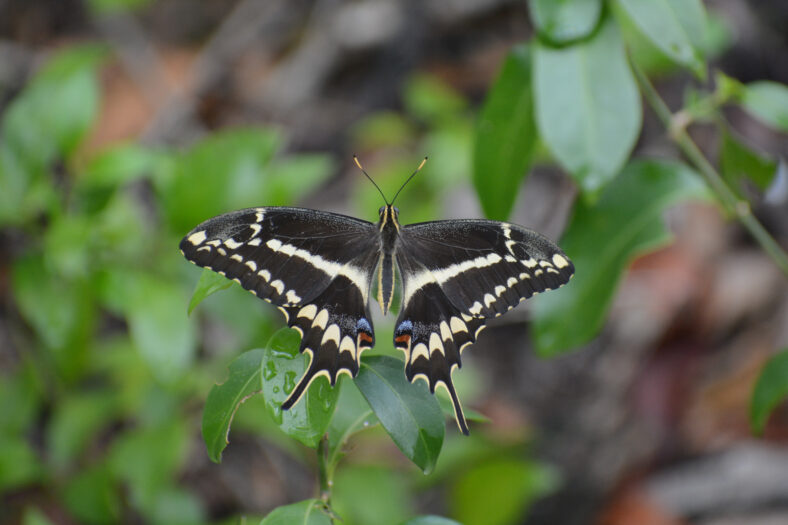Hurricanes Are Helping A Critically Endangered Butterfly Thrive

One of the most devastating tropical cyclones in United States history was Hurricane Andrew in 1992. It lay waste to Elliott Key, Florida, covering most of the island in seawater and toppling about a quarter of the trees.
At the time, conservationists feared that the hurricane would wipe out the remaining members of Schaus’ swallowtails (Papilio aristodemus) on the island, as only 73 individuals survived the storm, per the Florida Fish and Wildlife Conservation Commission.
They are black and yellow butterflies that are native to southern Florida. Now, they are only found on Elliott Key and Key Largo, making them critically endangered.
Schaus’ swallowtails face many environment-related risks, as well as inbreeding, which causes genetic diversity to be lost within the species.
Initially, their population on Elliott Key did drop after the storm, but four years later, the species is thriving. A 36-year-long study has shown that Schaus’ swallowtails saw similar population spikes in the aftermath of two other hurricanes: Wilma in 2005 and Irma in 2017.
The Schaus’ swallowtail butterfly became one of the first insects to be listed under the Endangered Species Act in 1976.
The butterfly likes living in high-elevation hammock forests with a mix of trees and grassland, which is also highly sought-after land for real estate in Florida.
In 2007, the butterfly’s numbers reached a new low, just two years after Hurricane Wilma. It was estimated that only 56 individuals were alive.
But the most recent estimate from 2021 shows that there are now around 4,400 butterflies on the island. The data suggests that hurricanes are partly responsible for the increase in numbers. But how can this be so?

Sign up for Chip Chick’s newsletter and get stories like this delivered to your inbox.
It may seem contradictory, but it is actually to the butterfly species’ benefit when a powerful storm happens to blow through.
First of all, the high winds of a hurricane do kill many adult butterflies and the seawater drowns many caterpillars. Immediately after the storm, both butterflies and caterpillars have fewer flowers and leaves to feed on.
But as the years pass, the fallen trees and branches create gaps in the forest’s canopy that let the sunlight in, allowing more plants and greenery to grow on the forest floor. As a result, their food supply flourishes.
“Hurricanes are natural disturbance events that shape population dynamics in ways that we are only just beginning to understand,” said Sarah Steele Cabrera, a biologist at the University of Florida.
Scientists are now confident that the Schaus’ swallowtail population has remained relatively stable over the long term.
These insects are adapted to handle living in areas prone to natural disturbances, so they have their own ways of pulling through.
The details of the study were published in the journal Biological Conservation.
More About:News